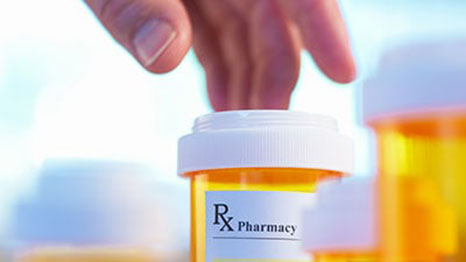What is Medicare Part D?
Medicare Part D helps pay for the cost of prescription drugs. You can get Part D included in your Medicare Advantage plan or through a standalone Part D plan from a private insurance company.
What does Medicare Part D (prescription drug coverage) cover?
Part D covers brand-name, generic, and specialty medications. Each plan has a list of drugs it covers, known as a formulary.
How much does Medicare Part D cost?
Your costs when enrolled in a Part D plan include:
- Your Part D plan monthly premium, if applicable.
- Any out-of-pocket costs such as copays, coinsurance, and deductibles included with the prescription drug plan you choose.
- A late enrollment penalty (this applies only if you have a period of 63 days without Part D or other creditable prescription drug coverage).
Stages of prescription drug coverage
As your prescription medication spending increases throughout the year, you move from one stage to the next. You start at the deductible stage at the beginning of each year. All Part D drug plans have the same stages.
- Deductible stage
- UPMC for Life plans do not have a deductible for Tier 1 and Tier 2 prescription drugs. If your plan does have a deductible, you will pay the full price for your drugs until you meet your Part D deductible.
- Initial coverage stage
- Your plan begins to pay for your covered prescriptions. You pay a copay or coinsurance, depending on the drug tier, until your total yearly costs reach $2,100. The total yearly drug costs are the drug costs paid by both you and your Part D plan.
- Catastrophic coverage stage
- Your total yearly drug costs will be capped at $2,100. Once your total yearly out-of-pocket drug costs reach $2,100, you will not pay anything for your drugs. You will stay in this stage until the end of the year.
Most UPMC for Life plans have a combined deductible for Tiers 3, 4, and 5. For drugs on these tiers, you will pay the full cost of each prescription until you reach your plan’s deductible amount. Once you have reached your deductible, you will move into the initial coverage stage.
Am I eligible for Medicare Part D?
You must have Medicare Parts A and B to join a Part D plan.
How do I get Medicare Part D?
- You can join a standalone Part D prescription drug plan. A standalone Part D plan would be in addition to Original Medicare or a Medicare Supplement plan.
- Most Medicare Advantage plans include Part D prescription drug coverage. If you have a Medicare Advantage plan, you cannot also join a separate standalone Part D plan.
Extra Help with prescription drug costs
If you have limited income and resources, you may qualify for Extra Help. Learn how you can get help with prescription drug costs.
Medicare resources
View MoreThis information is not a complete description of benefits. Call 1-866-400-5077 (TTY: 711) for more information. Out-of-network/Noncontracted providers are under no obligation to treat UPMC for Life members, except in emergency situations. Please call our customer service number or see your Evidence of Coverage for more information, including the cost sharing that applies to out-of-network services. Other physicians/providers are available in the UPMC for Life network.
This information is available for free in other languages. Please call our customer service number at 1-877-539-3080 (TTY: 711).
UPMC for Life has a contract with Medicare to provide HMO, HMO D-SNP, and PPO plans. The HMO D-SNP plans have a contract with the PA State Medical Assistance program. Enrollment in UPMC for Life depends on contract renewal. UPMC for Life is a product of and operated by UPMC Health Plan Inc., UPMC Health Network Inc., UPMC Health Benefits Inc., UPMC for You Inc., and UPMC Health Coverage Inc.
SilverSneakers is a registered trademark of Tivity Health Inc. SilverSneakers GO is a trademark of Tivity Health Inc. © 2025 Tivity Health Inc. All rights reserved.
UPMC for Life Members
Call us: 1-877-539-3080
TTY: 711
Oct. 1 – March 31:
Seven days a week from 8 a.m. to 8 p.m.
April 1 – Sept. 30:
Monday through Friday from 8 a.m. to 8 p.m.
UPMC for Life Prospective Members
Call us: 1-866-400-5077
TTY: 711
Oct. 1 – March 31:
Seven days a week from 8 a.m. to 8 p.m.
April 1 – July 31:
Monday through Friday from 8 a.m. to 8 p.m.
Aug. 1 – Sept. 30:
Monday through Friday from 8 a.m. to 8 p.m. Saturday from 9 a.m. to 3 p.m.
Y0069_260014
Last Updated: 10/1/2025




